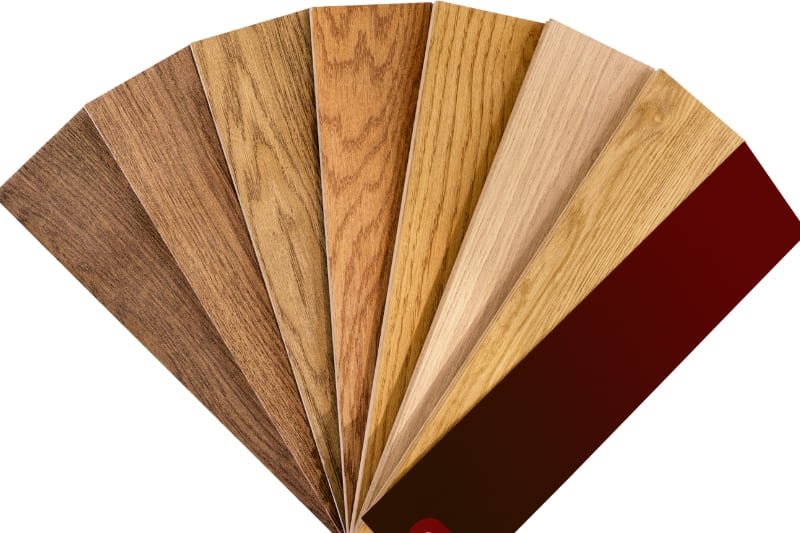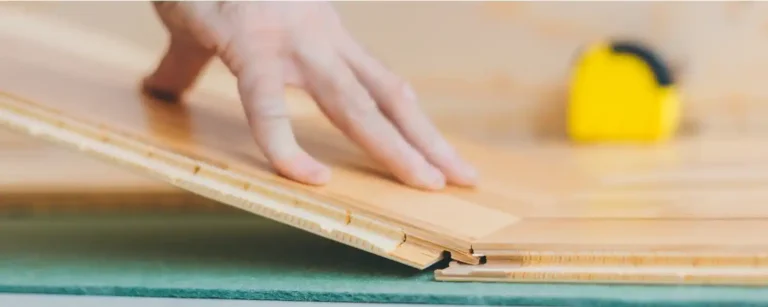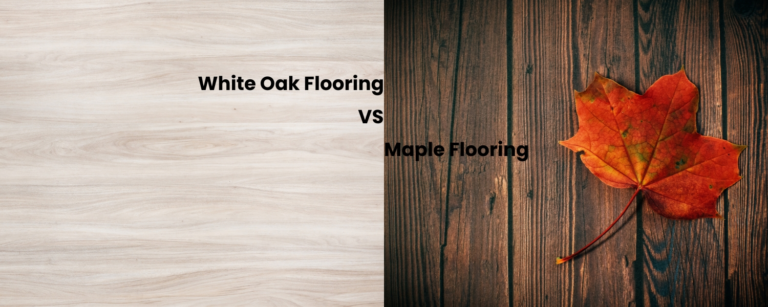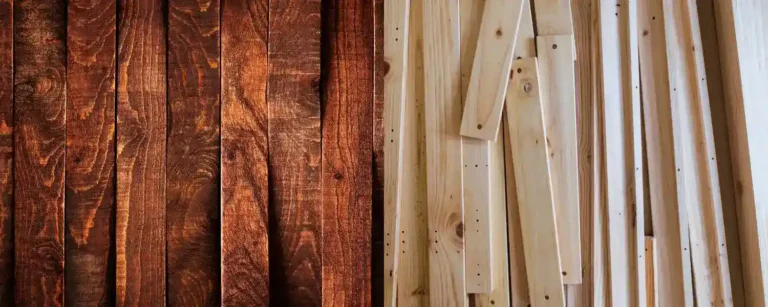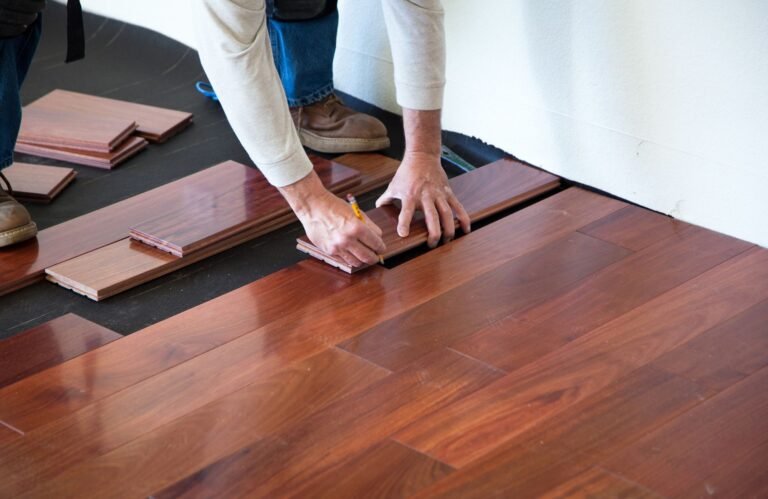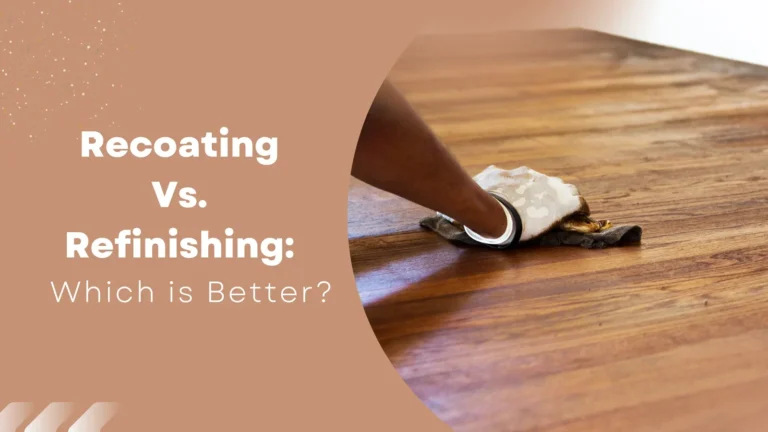5 Different Types of Engineered Hardwood Flooring
Are you looking for a simplified explanation of the different types of engineered hardwood flooring? Selecting the perfect flooring is essential to enhance your space’s visual appeal and functionality. Don’t worry! We understand the significance of making an informed decision that aligns perfectly with your preferences. Our blog is here to crack the mysteries of engineered hardwood and guide you in finding the perfect match for your home. We’re here to help you renovate or choose flooring for your new property. Our commitment is to guide you through the options and find the ideal solution. Get ready to explore and discover flooring that will elevate your space into a beautiful masterpiece.
Understanding Engineered Hardwood
What is Engineered Hardwood Flooring
Engineered hardwood is a flooring material comprising several layers of wood veneer stacked in a cross-grain pattern. This construction method provides it with stability and makes it resistant to moisture. Unlike traditional hardwood flooring, engineered hardwood is more durable and versatile. It also offers the same aesthetic appeal as real wood flooring.
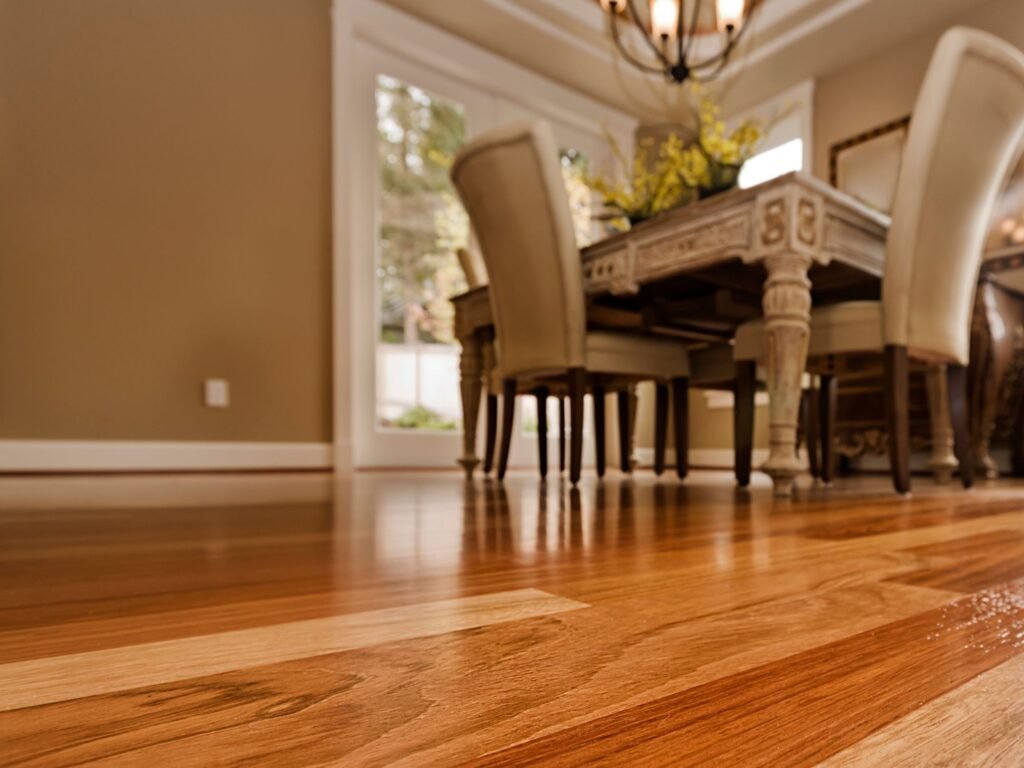
Advantages of Engineered Hardwood Flooring
- Enhanced Stability: Engineered hardwood has a cross-grain construction that reduces the likelihood of expanding and contracting. This likelihood makes it ideal for areas with high humidity or temperature changes.
- Versatile Installation Options: Engineered hardwood offers multiple installations, including glue-down, nail-down, or floating.
- Wide Range of Styles and Finishes: Engineered hardwood is available in numerous wood types, colors, finishes, and plank sizes. It allows you to achieve your desired look while maintaining durability.
- Cost-Effective: Engineered hardwood is more affordable than solid hardwood, with prices ranging from $6 to $21 per square foot.
- Environmentally Friendly: Engineered hardwood is a sustainable choice that promotes environmental friendliness. It utilizes less solid wood, making it an eco-friendly option for environmentally conscious consumers.
Learn in detail in our comprehensive guide, “What is engineered hardwood flooring?“
1. Types of Engineered Hardwood flooring Based on Construction
Understanding the different constructions of engineered hardwood flooring is essential when choosing the right option. This article will explain the various types to help you make an informed decision that suits your space’s requirements.
Plywood Core Engineered Hardwood
Plywood-core-engineered hardwood is known for its strength and resistance to warping. It comprises multiple layers laid perpendicular to each other, which enhances the flooring’s stability and durability.
HDF (High-Density Fiberboard) Core
HDF core-engineered hardwood is popular due to its affordability and ease of installation. The layers of HDF are made of tightly compressing wood fibers, ensuring good stability and uniformity. Additionally, it maintains its shape and appearance for a long time.
SPF (Spruce-Pine-Fir) Construction
SPF-engineered hardwood flooring combines the strength and flexibility of softwoods such as spruce, pine, and fir. The consistent quality of these woods allows for easy customization. This durable option is suitable for homes and businesses.
2. Types of Engineered Hardwood Flooring Based on Veneer
The surface layer of the engineered hardwood flooring influences its durability and appearance. Each type of surface layer has unique characteristics and designs that contribute to stylish and durable flooring solutions. In this section, we will explore the different types of veneers used in engineered hardwood.
Dry-Swan Face Veneer
The dry-sawn face veneer is known for its natural appearance and distinct grain patterns. It is made by sawing logs into thin layers and drying them to remove moisture. This type of veneer enhances the stability and durability of engineered hardwood flooring.
Sliced Veneer
The rotary cutting process creates sliced veneer. This method produces veneer with a consistent grain pattern and a smooth surface, offering design versatility and uniformity for engineered hardwood flooring.
Rotary Peeled Veneer
A blade rotates logs to produce rotary peeled veneer, which produces long, continuous sheets of veneer. This process showcases a distinctive, swirling grain pattern and slightly textured surface, adding character to engineered hardwood.
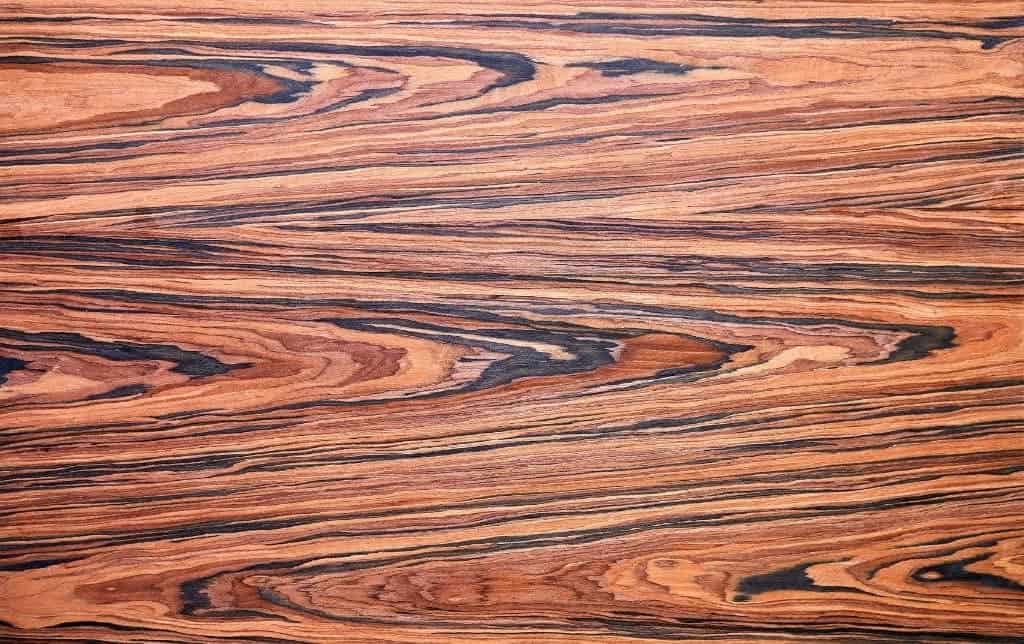
3. Types of Engineered Hardwood Flooring Based on Materials
Let’s explore different materials used in engineered hardwood flooring. Understanding these materials is important because they impact the flooring’s appearance, durability, and quality.
Oak
Oak-engineered hardwood flooring is renowned for its timeless elegance and natural beauty. It has a distinct grain pattern and various shades, ranging from light to dark. Oak is highly durable and resistant to wear, making it a popular choice.

Hickory
Hickory-engineered hardwood flooring has rustic charm and distinctive grain patterns. It features warm tones ranging from light to deep brown. Hickory flooring is exceptionally hard and durable, adding character and personality to any space.
Maple
Maple-engineered hardwood flooring offers a uniform appearance and light, creamy color tones. It has a clean and contemporary look. Maple is known for its durability and resistance to scratches and dents.
Birch
Birch-engineered hardwood features a fine, straight grain and warm, earthy tones. It enhances the natural beauty of various design aesthetics. Birch is durable and stable, making it a practical choice for high-traffic areas.
Bamboo
Bamboo-engineered hardwood flooring is an eco-friendly and sustainable option. It has a unique, contemporary look with a distinctive grain pattern. Bamboo is durable and moisture-resistant, making it suitable for humid areas.
4. Types of Engineered Hardwood Flooring Based on Plank Thickness
Now, let’s discuss the various thickness options for engineered hardwood flooring. These options impact the flooring’s appearance and performance over time. Take a closer look at these choices to find what works best for your space and needs.
3/8 inch
Engineered hardwood flooring that measures 3/8 inch thick offers a sleek, low-profile look. It is particularly suitable for areas with height restrictions. Despite its thinner profile, this type of flooring maintains durability and stability.
1/2 inch
Engineered hardwood flooring with a thickness of 1/2 inch strikes a balance between durability and versatility. It provides ample stability and support, making it suitable for residential and commercial spaces. The increased thickness enhances better sound insulation and a solid underfoot sensation.
5. Types of Engineered Hardwood Flooring Based on Finishes
Let’s discuss the finishes available for engineered hardwood flooring. Finishes, such as smooth, hand-scraped, textured, distressed, and wire-brushed, impact the flooring’s appearance and durability. Explore these options to find the one that best suits your style and space.
Handscraped
Handscraped-engineered hardwood has a rustic, textured surface. Its intentional designs resemble antique wood flooring. This finish adds character and warmth to any room, making it a popular choice for traditional and farmhouse-style interiors.
Wirebrushed
The wire brushing process removes softwood from the surface, resulting in subtle grooves and texture. It enhances the wood’s natural grain and adds depth to the flooring. Wirebrushed engineered hardwood is a great option for rustic and modern designs.

Textured
Textured-engineered hardwood has a textured surface that mimics the natural feel of wood grain. This finish adds depth and personality to the flooring, providing visually appealing results. Textured finishes are versatile and suitable for various interior styles.
Distressed
Distressed-engineered hardwood is artificially aged to achieve a weathered and worn appearance. This finish includes dents, scratches, and imperfections, giving the flooring a vintage and reclaimed look. Distressed finishes are perfect for creating a cozy and lived-in atmosphere.
Smooth
Smooth-engineered hardwood has a sleek and uniform surface without any texture or imperfections. This clean and modern finish is suitable for contemporary interiors with a minimalist look. Smooth finishes are easy to clean and maintain, making them a practical choice for busy households.
How to Choose the Right Engineered Hardwood Flooring?
Choosing the right engineered hardwood for your space involves many factors. Each plays an important role in ensuring the flooring meets your style and lasts decades. Here’s a simplified list to help you make the best decision:
- Consider the Wood Species: Different species of wood have different hardness levels, grain patterns, and color tones. For areas with high foot traffic, opt for harder woods like oak or hickory for long-lasting durability. Softer woods like walnut or cherry can add warmth and intricate patterns to inviting spaces.
- Examine the Finish: Your engineered hardwood’s finish affects its appearance and durability. Some finishes have special treatments for scratch resistance. Consider the activity level in your space and choose a finish that suits your lifestyle.
- Assess the Plank Size: Plank width and length can influence how spacious a room appears. Wider planks create a more open feel, while narrower planks offer a traditional look. Consider the size of your space and the aesthetic you desire when selecting the plank dimensions.
- Understand the Installation Process: Different engineered hardwoods have various installation methods, such as glue-down, click-lock, or floating. Evaluate your DIY skills or consult a professional to determine the best method for your home.
- Check the Thickness: The thickness of engineered hardwood affects its stability and resistance to moisture. Thicker hardwood tends to be of better quality and stability, making it suitable for varying climate conditions.
- Budget Considerations: Set a realistic budget for your flooring project. While it may be tempting to choose the cheapest option, investing in higher-quality and more durable engineered hardwood will provide greater long-term value.
- Warranty and Aftercare: Look into the warranty offerings and maintenance requirements. A good warranty can provide peace of mind, and understanding the care procedures will help keep your engineered hardwood in top condition.
Upgrade Your Ambience by Choosing Engineered Hardwood
Finding the right engineered hardwood can be challenging, especially with abundant available options. Examining construction methods, finishes, and materials can seem devastating. However, understanding each type’s differences and advantages can help you make well-informed decisions.
When searching for engineered hardwood flooring, consider Villagio Wood Floors. We’re a California-based wholesaler offering various high-quality engineered hardwood options. Our flooring focuses on being durable, visually appealing, and affordable, ensuring your customers get excellent flooring. With our diverse range, you can upgrade your flooring selection and offer your customers the best options.
Types of Engineered Hardwood Flooring – FAQs
Can engineered hardwood be installed over concrete?
Yes! You can refinish engineered hardwood over concrete if you properly prepare the concrete and ensure the moisture levels are suitable.
Learn the process of installing engineered hardwood on concrete through our other blog, “Installing Engineered Hardwood On Concrete.”
What is the difference between plywood core and HDF core-engineered hardwood?
Plywood-engineered hardwood has layers of plywood as its core material, providing stability and durability. On the other hand, HDF-engineered hardwood uses compressed fibers for its core, providing a more uniform surface and often a lower price point.
Can engineered hardwood be refinished?
In most cases, you can refinish engineered hardwood. However, the number of refinishings depends on the thickness of the wear layer. Thicker wear layers allow for multiple refinishing, while thinner wear layers may limit the number.
How does the cost of engineered hardwood compare to solid hardwood?
Engineered hardwood is usually cheaper than solid hardwood, although prices vary depending on wood species, construction, and finish. Solid hardwood tends to be more expensive due to its solid wood composition.
To estimate the cost of your engineered hardwood, read our blog, “How Much Does Engineered Hardwood Flooring Cost?“
How long does engineered hardwood last?
Engineered hardwood can last 20 to 30 years or more, depending on maintenance. However, its lifespan varies depending on wear layer thickness, construction quality, and maintenance level.
Learn more about engineered hardwoods lifespan in our previour blog, “How long does engineered hardwood lasts?“

